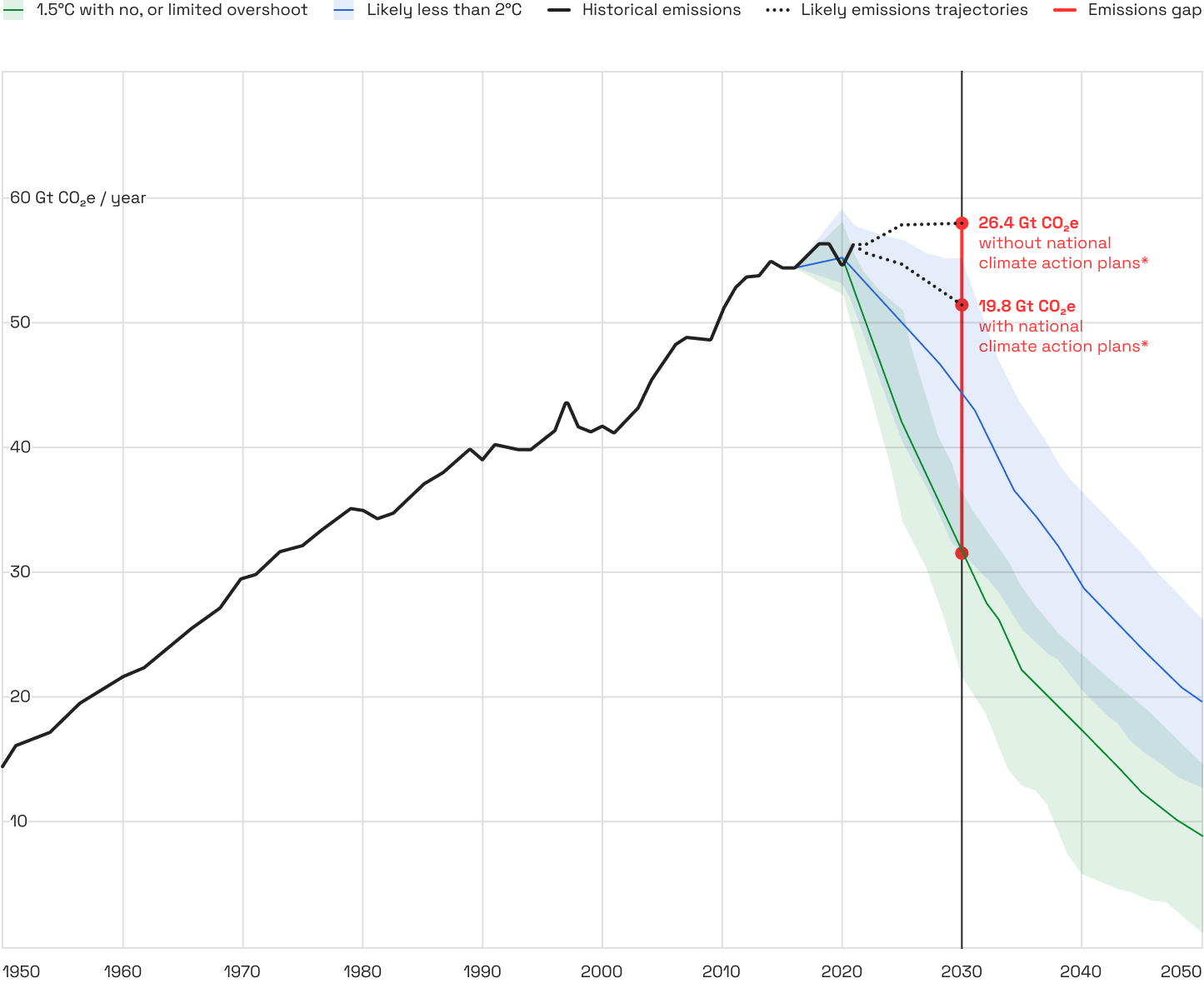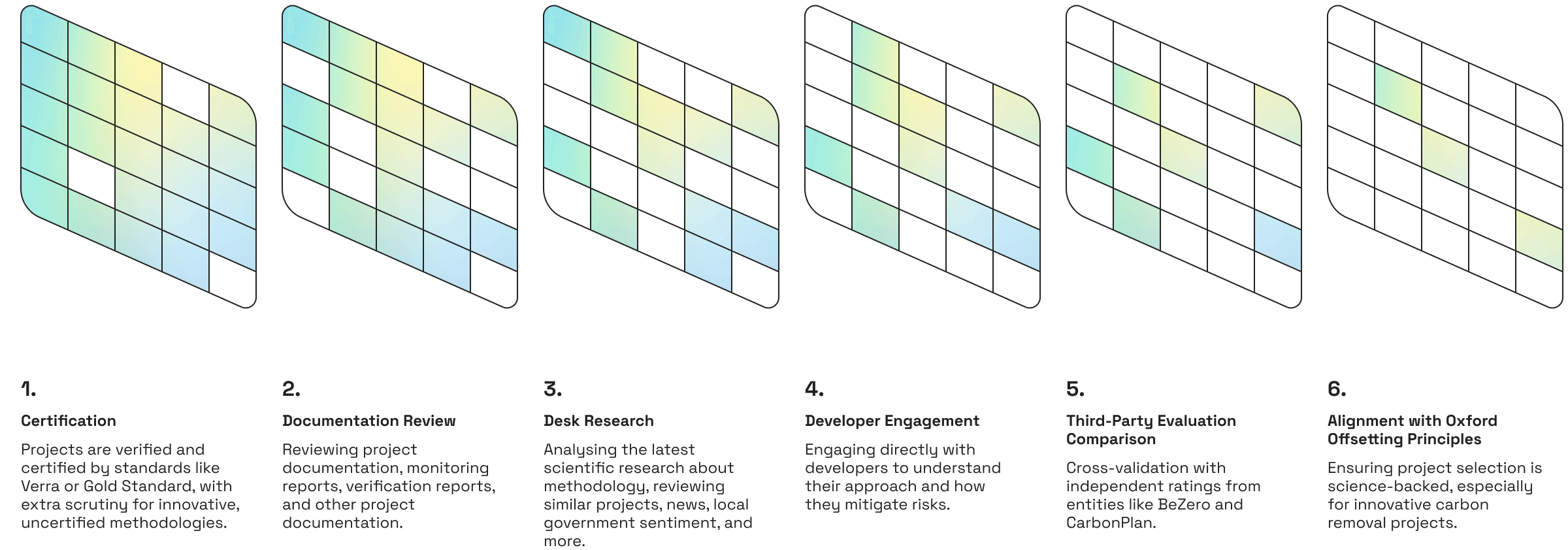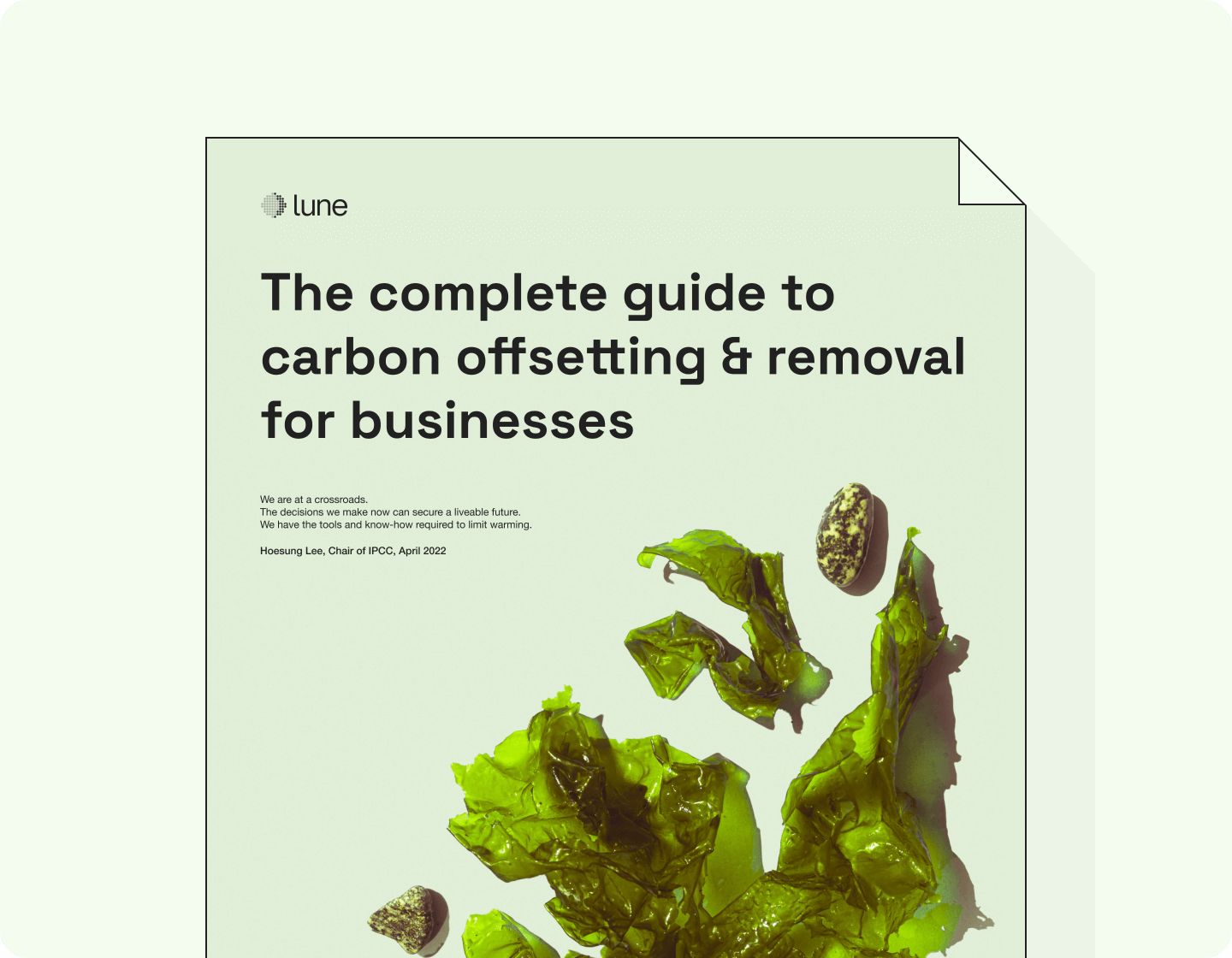

After two years of research, the United Nations (UN) will propose a new framework for climate project methodologies and carbon removals at COP28. Backed by the latest climate science, this proposal signals that high quality carbon credits are essential for reaching net zero. A hot topic at COP28.
The framework could act as a compass for the Voluntary Carbon Market (VCM). Akin to the Wild West, the VCM is full of “carbon cowboys”. They shepherd low quality climate projects that in the worst cases harm not only brand reputations but also damage the local environment and communities. This is why at Lune, we advocate for quality thresholds for the use of carbon credits.
What is a quality threshold for the use of carbon credits?
A quality threshold is the guidelines set by a company for when, what, and how to use carbon credits. The purpose is to prevent an overreliance on low quality carbon credits. Net Zero Tracker, an independent data consortium including Oxford University, found that of the 2000 biggest listed companies that have set a net zero target, just 13% had a quality threshold for using carbon offsets.
Below we outline emerging best practices that can guide this governance and accelerate your journey towards becoming a climate leader.
When to use carbon credits
The latest climate science from the UN states that emissions need to be cut by 43% by 2030, compared to 2019 levels. We set mid-century net zero targets because decarbonisation is a process. Sustainability leads know it cannot happen overnight.
 UN Technical dialogue of the first global stocktake
UN Technical dialogue of the first global stocktakeThe Climate Disclosure Project (CDP), which reviews disclosures from companies that make up half of global market capitalisation, outlines specific best practices on when to use carbon credits. They state that companies should use carbon credits when they have set ambitious, science-based, 1.5°C-aligned emission reduction targets, and are also on track to meet them.
However, latest guidance from the Voluntary Carbon Markets Integrity initiative specifies that companies with decarbonisation targets approved by the Science-based Target initiative (SBTi) should use high quality carbon credits each year to make up for their actual scope 3 emission reductions vs. their target. For example, if a company aims to reduce Scope 3 emissions from 100tCO₂ to 90tCO₂ in 2023 but only achieves 95tCO₂, it should buy 5tCO₂ in carbon credits to offset the excess.
Climate leaders know decarbonisation is essential for reaching net zero, but insufficient without carbon removal. This incentivised maturity and commitment to net zero could be why voluntary carbon buyers are decarbonising twice as fast as their peers. But those who fund high quality climate projects are decarbonising even faster.

What carbon credits to use
The science is clear. Only high quality carbon credits can truly accelerate net zero goals. For example, renewable energy projects deliver the most affordable credits, but since this is now the cheapest source of power in most parts of the globe, any extra funding won’t move the needle on climate change. It’s about quality, not quantity.
However, performing due diligence to unearth climate projects that deliver a positive climate impact is a tricky and time-consuming process, but critical to success. When surveying companies, the Net Zero Tracker asks what conditions – if any – a company outlines for funding climate projects, such as:
- Must be high environmental integrity
- Avoid social harm
- Avoid biodiversity harm
- Not include avoided emissions (e.g. via renewable energy projects)
- Not include emissions reductions (e.g. via greater efficiency)
- Not include biological sequestration (e.g. via afforestation)
At Lune, out of the hundreds of climate projects we vet, only the top 10-20% make the cut. Our experts leverage a rigorous vetting process and comprehensive six-point evaluation criteria to unearth climate projects that deliver measurable impact and peace of mind for our customers.
We go beyond the Net Zero Tracker criteria and investigate durability, additionality, measurability, co-benefits, risk mitigation, and deliverability of climate projects. Our curated library of projects comply with The Core Carbon Principles and Assessment Framework set out by the Integrity Council for the Voluntary Carbon Market (iCVCM) so climate leaders can navigate carbon credits with ease and expertise.
To learn more about how we assess the quality of climate projects at Lune, download our free evaluation guide.

How to use carbon credits
The final piece of the quality threshold puzzle is how to use carbon credits. Common practice is to use carbon credits to offset emissions, but increasingly sustainability leaders are setting a carbon removal target.
While this puts a price on a company's GHG emissions, tying carbon removal to your exact emissions can be tricky. A business needs to decide what scope of emissions will be counterbalanced. Is it just scope 1, or will scope 2 and 3 emissions be offset too? Further, it requires accurate monitoring of emissions, as well as the retirement of credits, to ensure that emissions are compensated for.
But most importantly, this leads to buying cheap offsets to compensate for emissions at the lowest possible cost to the business. This fails to consider the real impact of climate projects. You don’t have to travel far back in time to discover the costs of corrupt projects, like South Pole’s Kariba project, to local communities and ecosystems, and business reputations.
Attaching a number can limit the positive climate impact climate leaders can have. One emerging trend is to set a Carbon Dioxide Removal (CDR) target, or create a contribution model. Here, businesses are setting an internal or simply an ambitious but manageable budget to spend on contributing to the most impactful projects.
Separate from a decarbonisation strategy, setting a CDR target enables climate leaders to go beyond the value chain. This aligns with the four elements for reaching net zero defined Science-based Target initiative. Spurring businesses to become climate positive.
Carbon credits at COP28
The implementation of either strategy is essential for accelerating net zero goals. To limit warming to 1.5°C, we need to hit net zero by 2030. And to do that we need to scale climate projects to not only meet the demand for carbon removal in 2030, but also to avoid the irreversible costs of climate change like biodiversity loss.
While many criticisms about the shortfalls of carbon credits are true, valuable and therefore expensive carbon credits are the single best mechanism to address the triple threat of climate change, biodiversity loss, and humanitarian crises. We look forward to seeing talks at COP28 shift the standards of carbon credits.
To get started with carbon offsetting, download our free ebook: The complete guide to carbon offsetting.

Readers also liked
Readers also liked

Subscribe for emissions intelligence insights
Get the latest updates in the world of carbon tracking, accounting, reporting, and offsetting direct to your inbox.


